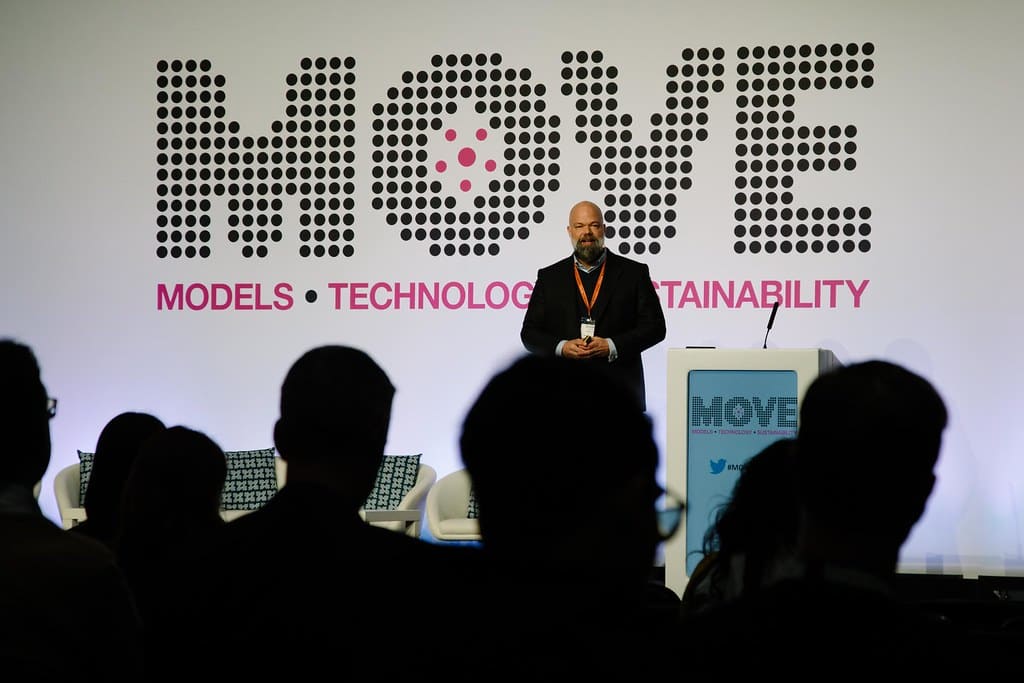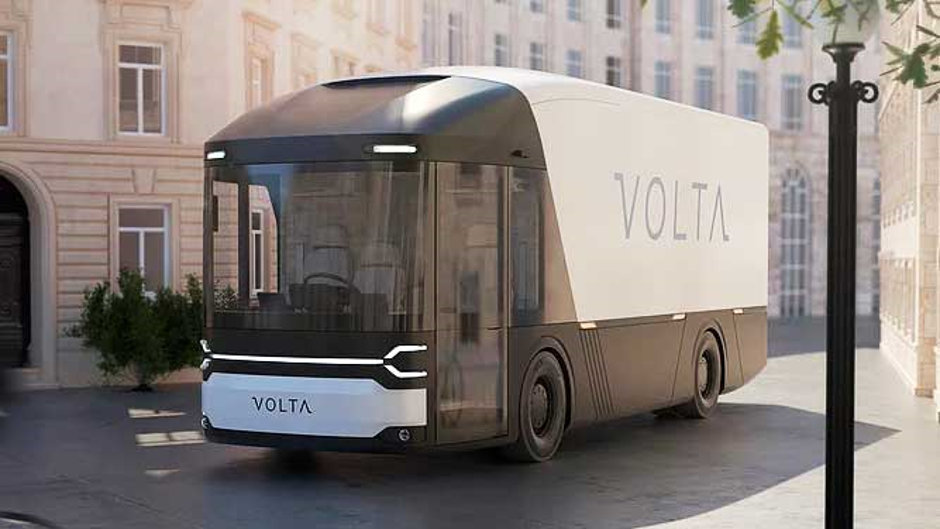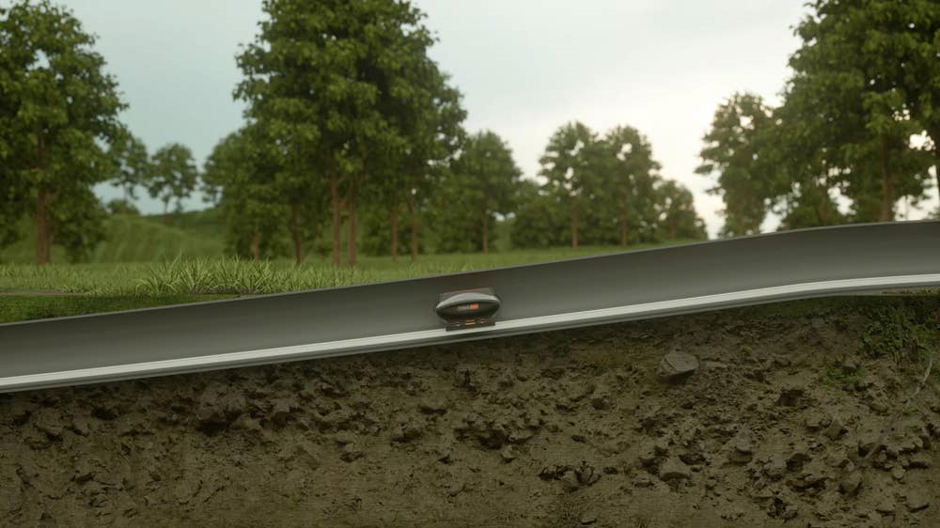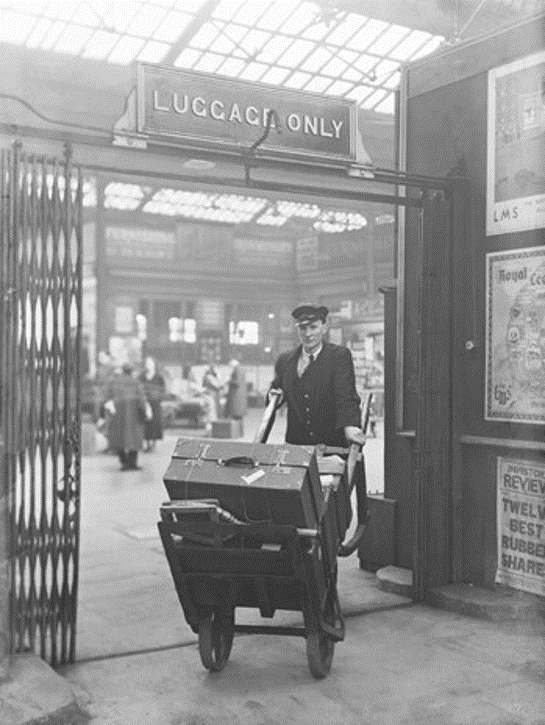Insight / Blog
3 things to know from Move 2020

EVs are both amazing and awkward
Electric vehicles reduce tailpipe emissions to nil. That’s very cool. Obviously the energy used to charge them comes from a pretty carbon-intensive mix of sources, but there’s only so much logistics providers can do. Showing that there’s demand for clean electrical charging will be a start.
It’s also encouraging to see electrification moving up the scale from last-mile vans to larger vehicles. We saw mockups and design info for the Volta Truck, an electric 16-18 tonne lorry which has a number of innovative safety and design features like a wraparound windscreen and a low-slung central driver seat. In theory, this makes it much easier for a driver in a busy urban environment to be aware of their surroundings. This concept also shows how electrification has a power to make roads not just cleaner but safer, as space is freed up by the removal of the internal combustion engine.

However, the availability of real electric vehicles for delivery remains a huge challenge. Gnewt’s Sam Clarke highlighted a double page spread newspaper ad in which Volkswagen, fresh off their emissions scandal, featured several of their all-electric range of vans and car concepts. All well and good, but none of them were actually available for sale in the UK. Getting these concepts actually into market is crucial to start decarbonising the last mile. Additionally, while central London has acceptable charging infrastructure for electric delivery vehicles, the national network is not yet ready to support a large-scale transition to electric vehicles.
Maglev autonomous goods pipes: cool, difficult and expensive
There were no shortage of futuristic transport ideas at Move, and plenty of those were relevant to logistics. Drones and droids were surprisingly under-represented at the exhibition considering the press they draw, though considering their current viability that may be less shocking. It will still be some time until an Amazon drone drops your new telly in the garden.

It will also be some time until we see underground tunnels transporting goods into urban centres, but the premise is an interesting one. We’ve written about Magway before, but it was good to see them presenting in the City Freight speaking track at Move. They’re in discussions with Heathrow Airport to help move the thousands of kilos of goods onto and out of the airport campus, a process which currently takes huge amounts of time thanks to required security checks et cetera.
Magway proposes to run a pipe under the terminal to the goods-in area, allowing goods to enter and exit the area and moving sorting and managing this process to somewhere off the already very space-pressured Heathrow site itself.
This will be an interesting test of a very cool concept, which uses very little energy and has the ability to move goods very efficiently, taking a portion of freight traffic off roads. Right now, Magway co-founder Phil Davies acknowledges the price for a kilometre of underground pipe is pretty high, and is looking to partnerships with public entities to help build out the requisite infrastructure.
Imaginative new/old models: Gnewt’s portering system
We finish with a couple of thoughts about new models and ways of working in the last mile. Gnewt recognised that their drivers in central London spent more time walking than driving, and spotted an opportunity for innovation. By using vans as movable hubs, they could deliver more efficiently and reduce miles driven.

It’s an old concept, having street porters who carry goods around, but it’s one which might have some pretty useful application in a city like London where parking and driving is much harder than walking around. In response to a question from Doddle, Gnewt CEO Sam Clarke noted that in less densely built-up zones than central London, porters could be using bikes or ebikes to cover bigger distances with the same load, the principle effectively staying the same.
Finally, Doddle CEO Tim Robinson spoke about the importance of and potential for collaboration and carrier-agnostic infrastructure. Post Offices currently only serve Royal Mail, but at least in theory could be totally agnostic, accepting parcels from every carrier. That would expand every carrier’s PUDO network, which in turn makes those networks more appealing and convenient for consumers, which increases PUDO adoption, which improves the economics of online delivery for carriers, and so on.
Check out Tim’s slides here, and if you’d like to hear more from us about how we can help power success in PUDO, returns and collections, drop us a line.
Topics:
Related articles
Return fees or free returns: why not both?
Debates between return fees or free returns miss the bigger picture: how to address the root issues of returns.
Important lessons from Leaders in Logistics 2024
Leaders in Logistics 24 dived into AI & automation, sustainability, changing ecommerce behaviours, emerging consumer expectations & predicted what the next decade had in store.
Postal results, reforms, and returns
Posts around the world are seeking reform, but how can they drive improved results in the short term?












